新概念lesson25教案
- 格式:doc
- 大小:294.00 KB
- 文档页数:9

Lesson 25 Mrs. Smith's Kitchen and Lesson 26 Where is it?Electronic adj. 电子的electronic equipment/product ★cooker n. 炉子,炊具在英文中炊事员用cook。
★middle n. 中间in the middle of…KitchenWhat can you see in a kitchen?Pot bowl spoon spatula(炒菜铲)cooker micro-wave oven oven (烤箱)toaster(面包机)hook(抽油烟机)hook oil salt source vinegar3) right ---a. n. left right front back up downon the left/right in the front of sth.b. the left one./Gloria, please pass me the bookWhich one?The right one.c. 正确的You’re right. I’m wrong.Give me a right answer.4) cooker—cookcook n. 厨师chief 主厨,大厨v. cook a meal /prepare breakfast5)middle in the middle of sth. (city/room/river)middle school No. 18 middle schoolmid--mid—wife mid—night6) of ……的有生命的东西“的”用’s无……………………………….. sth of sth.如:狗的腿:dog’s legs桌子腿legs of deskNow , do exercise:a. 我的头b. 这只狗的头c. 这本书的名字d. 国王的子民e. 这个城市的人民f. 中国的人民my father’s friends 还可以说成:friends of my father’s我爸的一个朋友(1)one of my father’s friends (2) a friend of my father’s7) room --housebedroom living room sitting room restroomdinning room (smoke room) washing room[Grammar]1、复习Mrs. 等有关人的称谓:1)there be 句型表示某处有某物(1)eg. There’s a dog on his head.There is/are 由后面直接跟的第一个名词的单数/复数决定eg: There are two men near the door.There is a woman and two men near the door.。
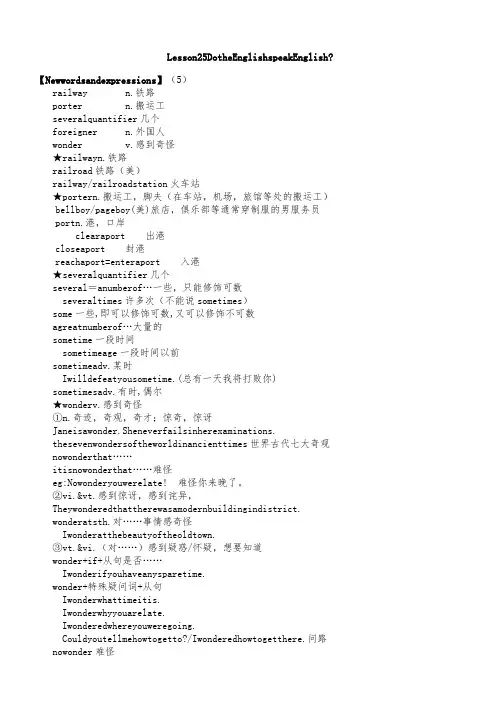
Lesson25DotheEnglishspeakEnglish?【Newwordsandexpressions】(5)railway n.铁路porter n.搬运工severalquantifier几个foreigner n.外国人wonder v.感到奇怪★railwayn.铁路railroad铁路(美)railway/railroadstation火车站★★★①②wonderatsth.对……事情感奇怪Iwonderatthebeautyoftheoldtown.③vt.&vi.(对……)感到疑惑/怀疑,想要知道wonder+if+从句是否……Iwonderifyouhaveanysparetime.wonder+特殊疑问词+从句Iwonderwhattimeitis.Iwonderwhyyouarelate.Iwonderedwhereyouweregoing.Couldyoutellmehowtogetto?/Iwonderedhowtogetthere.问路nowonder难怪wonderfuladj.极好的【Text】IarrivedinLondonatlast.Therailwaystationwasbig,blackanddark.Ididnotknowthewaytomy hotel,soIaskedaporter.InotonlyspokeEnglishverycarefully,butveryclearlyaswell.Theporter,h owever,couldnotunderstandme.Irepeatedmyquestionseveraltimesandatlastheunderstood.He answeredme,buthespokeneitherslowlynorclearly.'Iamaforeigner,'Isaid.Thenhespokeslowly, butIcouldnotunderstandhim.MyteacherneverspokeEnglishlikethat!TheporterandIlookedate achotherandsmiled.ThenhesaidsomethingandIunderstoodit.'You'llsoonlearnEnglish!'hesaid. Iwonder.InEngland,eachpersonspeaksadifferentlanguage.TheEnglishunderstandeachother, butIdon'tunderstandthem!DotheyspeakEnglish?参考译文听.慢了,,这.1、与2、“reachhome/there”,如一定要这样写则把“home”看作名词,“there”当代词看,不作副词看gethome到家;getthere到那3、Therailwaystationwasbig,blackanddark.并列的表达方式中前面都是用逗号隔开,最后两个用and连接balck颜色(建筑物)Theroomisblack.dark没有光线Itisdark.4、Ididnotknowthewaytomyhotel,soIaskedaporter.thewayto…通往……路Canyoutellmethewayto…Idon'tknowthewayto….Canyoutellmehowtogetthere?Idon'tknowthewaytotheschoolandwhereisit?Iknowtheway.knowsth.well对……很熟悉Iknowtheboywell.5、InotonlyspokeEnglishverycarefully,butveryclearlyaswell.notonly...but...aswell=notonly…butalso…不但……而且……IcanspeaknotonlyChinesebutEnglishaswell.6、7、【St.以序数词出现的,月份一定要是英语字母Februarythefourth,1998=thefourthofFebruary,1998HaidianDistrict,(海淀区)BeiJing,China.(最后一个地点要打上句号)【Keystructures】并列句中的语序通过并列连词可以把几个简单句连接起来构成一个并列句。
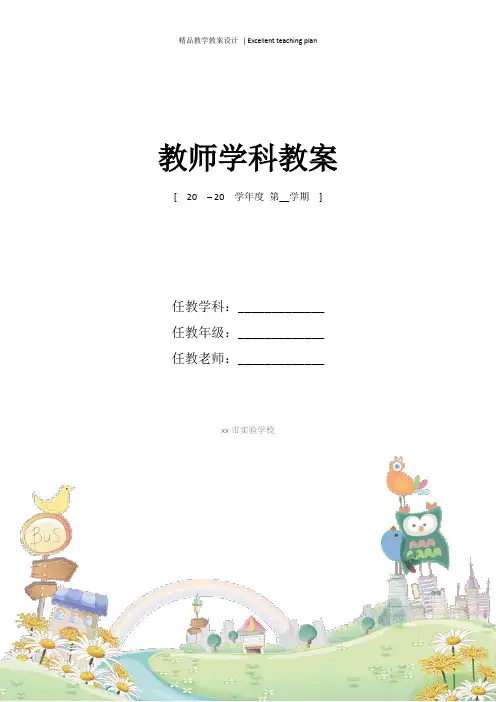
教师学科教案[ 20 – 20 学年度第__学期]任教学科:_____________任教年级:_____________任教老师:_____________xx市实验学校Lesson 25-26重点单词Mrs., kitchen, refrigerator, right, electric, left, cooker, middle, of, room, cup, where, in重点句型There is a refrigerator in the kitchen.The refrigerator is white.It’s on the right.Where is it?语法精讲There is a refrigerator in the kitchen. 厨房里有个冰箱。
结构分析本句应用的是There be 句型,表示“某地有某物”,其结构为“There be+ 主语+ 地点状语”。
此句型中,谓语动词be要与其后的主语在数上保持一致。
本句中,a refrigerator是单数名词,因此动词用is。
语法拓展介词in意为“在……里”,表示位置。
即时操练请用be动词的适当形式完成下列句子。
1.There a new hospital near our house.2.There some books on the desk.The refrigerator is white. 冰箱是白色的。
语法拓展定冠词the的用法:英语中,冠词分为不定冠词(a,an)和定冠词(the)两类。
我们前面已经学到不定冠词a和an的用法。
定冠词the表示特指,用来指代前面提到过的人或物。
另外,当提到世界上独一无二的事物时,也要用定冠词the。
如:We have a dog in our house. The dog is two years old.我们家有一只小狗。
这只小狗两岁了。
The sun is a star at the centre of the Solar System.太阳是位于太阳系中心的一颗恒星。
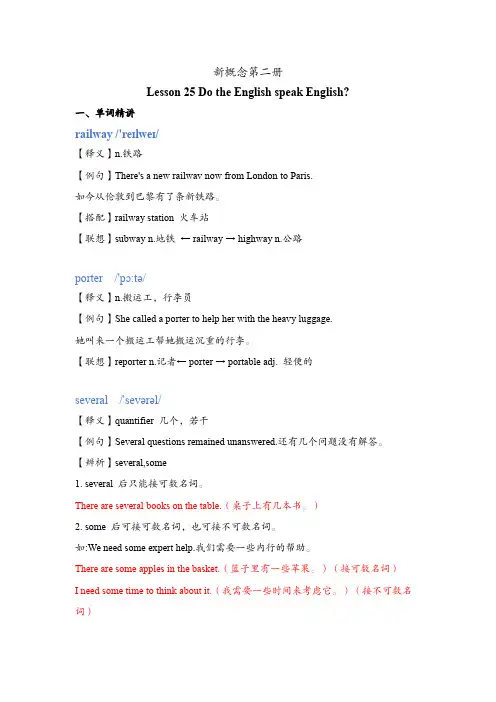
新概念第二册Lesson 25 Do the English speak English?一、单词精讲railway /'reɪlweɪ/【释义】n.铁路【例句】There's a new railwav now from London to Paris.如今从伦敦到巴黎有了条新铁路。
【搭配】railway station 火车站【联想】subway n.地铁← railway → highway n.公路porter /'pɔ:tə/【释义】n.搬运工,行李员【例句】She called a porter to help her with the heavy luggage.她叫来一个搬运工帮她搬运沉重的行李。
【联想】reporter n.记者← porter → portable adj. 轻便的several /'sevərəl/【释义】quantifier 几个,若干【例句】Several questions remained unanswered.还有几个问题没有解答。
【辨析】several,some1. several 后只能接可数名词。
There are several books on the table.(桌子上有几本书。
)2. some 后可接可数名词,也可接不可数名词。
如:We need some expert help.我们需要一些内行的帮助。
There are some apples in the basket.(篮子里有一些苹果。
)(接可数名词)I need some time to think about it.(我需要一些时间来考虑它。
)(接不可数名词)foreigner /'fɒrmə/【释义】n. 外国人【例句】There are many foreigners here.这儿有很多外国人。
【联想】foreigner → foreign adj.外国的wonder /'wʌndə/【释义】vi. ① 感到奇怪【例句】I was just wondering我只不过是好奇而已。
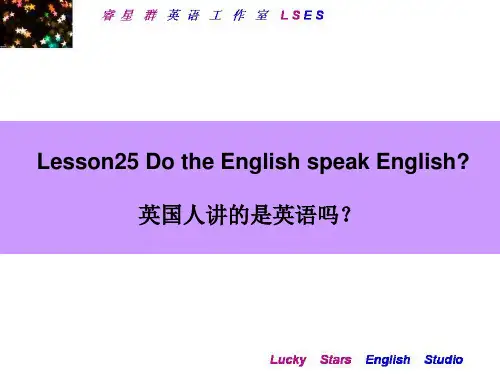
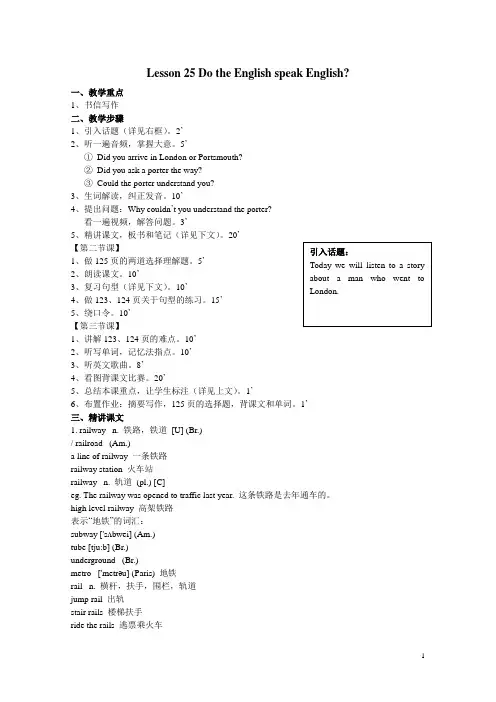
Lesson 25 Do the English speak English?一、教学重点1、书信写作二、教学步骤1、引入话题(详见右框)。
2’2、听一遍音频,掌握大意。
5’①Did you arrive in London or Portsmouth?②Did you ask a porter the way?③Could the porter understand you?3、生词解读,纠正发音。
10’4、提出问题:Why couldn’t you understand the porter?看一遍视频,解答问题。
3’5、精讲课文,板书和笔记(详见下文)。
20’1、做125页的两道选择理解题。
5’2、朗读课文。
10’3、复习句型(详见下文)。
10’4、做123、124页关于句型的练习。
15’5、绕口令。
10’【第三节课】1、讲解123、124页的难点。
10’2、听写单词,记忆法指点。
10’3、听英文歌曲。
8’4、看图背课文比赛。
20’5、总结本课重点,让学生标注(详见上文)。
1’6、布置作业:摘要写作,125页的选择题,背课文和单词。
1’三、精讲课文1. railway n. 铁路,铁道[U] (Br.)/ railroad (Am.)a line of railway 一条铁路railway station 火车站railway n. 轨道(pl.) [C]eg. The railway was opened to traffic last year. 这条铁路是去年通车的。
high level railway 高架铁路表示“地铁”的词汇:subway ['sʌbwei] (Am.)tube [tju:b] (Br.)underground (Br.)metro ['metrəu] (Paris) 地铁rail n. 横杆,扶手,围栏,轨道jump rail 出轨stair rails 楼梯扶手ride the rails 逃票乘火车sit on the rails (Am.) 骑墙,保持中立railing n. 栏杆iron-bar railing 铁栏杆2. porter n. 搬运工,脚夫(在车站,机场,旅馆等处的)bellboy / pageboy (Am.) 旅馆,俱乐部等通常穿制服的男服务员port n. 港,口岸clear a port 出港close a port 封港reach a port / enter a port 入港eg. Many ships frequent the port. 许多船只常来此港。
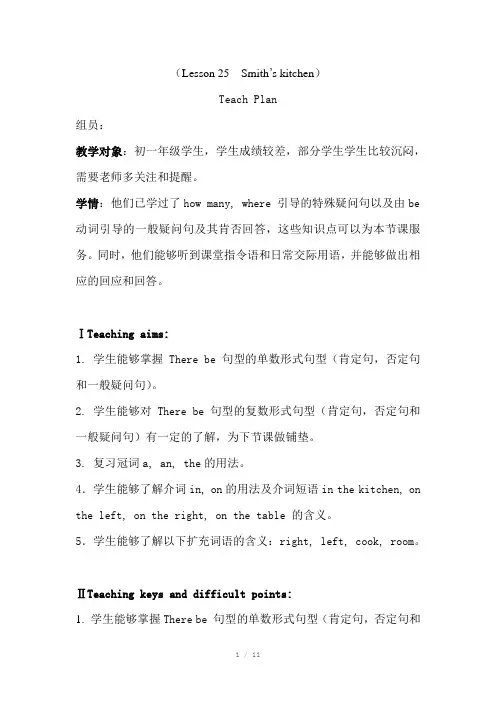
(Lesson 25 Smith’s kitchen)Teach Plan组员:教学对象:初一年级学生,学生成绩较差,部分学生学生比较沉闷,需要老师多关注和提醒。
学情:他们已学过了how many, where 引导的特殊疑问句以及由be 动词引导的一般疑问句及其肯否回答,这些知识点可以为本节课服务。
同时,他们能够听到课堂指令语和日常交际用语,并能够做出相应的回应和回答。
ⅠTeaching aims:1. 学生能够掌握There be 句型的单数形式句型(肯定句,否定句和一般疑问句)。
2. 学生能够对There be 句型的复数形式句型(肯定句,否定句和一般疑问句)有一定的了解,为下节课做铺垫。
3. 复习冠词a, an, the的用法。
4.学生能够了解介词in, on的用法及介词短语in the kitchen, on the left, on the right, on the table 的含义。
5.学生能够了解以下扩充词语的含义:right, left, cook, room。
ⅡTeaching keys and difficult points:1.学生能够掌握There be 句型的单数形式句型(肯定句,否定句和一般疑问句)。
Ⅲ Teaching aids:1.PPT 白板白板擦双色笔ⅣTeaching steps:Step1 Greeting & lead-inT: Good morning, class.Ss: Good morning, Betty.T: Ok, now I’ll divide you into two groups. You are G☆,and you are G※.First, let’s hear a song, and then answer my question. Which group’s answer is right, you will get some gift from Father Christmas. Are you ready? Let’s go!(播放音乐Jingle bell rock播放以后,抽学生回答问题。
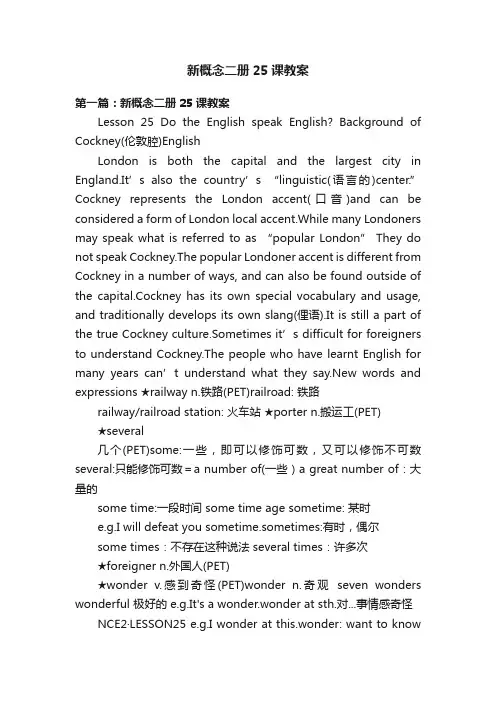
新概念二册25课教案第一篇:新概念二册25课教案Lesson 25 Do the English speak English? Background of Cockney(伦敦腔)EnglishLondon is both the capital and the largest city in England.It’s also the country’s “linguistic(语言的)center.” Cockney represents the London accent(口音)and can be considered a form of London local accent.While many Londoners may speak what is referred to as “popular London” They do not speak Cockney.The popular Londoner accent is different from Cockney in a number of ways, and can also be found outside of the capital.Cockney has its own special vocabulary and usage, and traditionally develops its own slang(俚语).It is still a part of the true Cockney culture.Sometimes it’s difficult for foreign ers to understand Cockney.The people who have learnt English for many years can’t understand what they say.New words and expressions ★railway n.铁路(PET)railroad: 铁路railway/railroad station: 火车站★porter n.搬运工(PET)★several几个(PET)some:一些,即可以修饰可数,又可以修饰不可数several:只能修饰可数=a number of(一些)a great number of:大量的some time:一段时间 some time age sometime: 某时e.g.I will defeat you sometime.sometimes:有时,偶尔some times:不存在这种说法 several times:许多次★foreigner n.外国人(PET)★wonder v.感到奇怪(PET)wonder n.奇观seven wonders wonderful 极好的 e.g.It's a wonder.wonder at sth.对...事情感奇怪NCE2·LESSON25 e.g.I wonder at this.wonder: want to know想要知道Grammar 1.not only… but …as well不仅…而且…为并列连词,连接状语,相当于not only…but also.e.g.He can not only speak Chinese ,but write as well.e.g.Not only my mother was unhappy, but Mary as well.2.neither…nor… 既不…也不…连接并列状语 e.g.She could neither speak the language nor write it.e.g.He can neither sing nor dance.3.either… or… 或是…或是…连接并列状语e.g.He plays either soccer or rugby.e.g.Either you or I must tell him.4.wonder :want to know v.想知道间接引语的疑问句:一般疑问句用if引导,特殊疑问句用特殊疑问词引导 Wonder + if:是否 wonder+特殊疑问词e.g.I wonder if you have any spare time.e.g.I wonder what time it is 所有的从句都用陈述句的句序,陈述句句序:主语在动词前面 e.g.I wonder why you are late.e.g.I wondered where you were going.wonder n.奇观wonderful adj.极好的 wonder v.感到奇怪Exercises Join the sentences with the joining words 1.I can speak Chinese.I can speak English.(not only …but …as well)_____________________________________________________________ 2.He is at home.He is at work.(either…or…)_________________________________________________ ____________ 3.I have no money to lend you.He has no money to lendyou.(Neither…nor…)_______________________________________________ ______________ 4.I spoke English very carefully.I spoke English very clearly.(not only…but…as well)_____________________________________________________________ NCE2·LESSON25 5.She must be mad.She must be very wise.(either…or…)_____________________________________________________________ 6.He went on holiday.I went on holiday.(Both…and…)______________________________________________ _______________ PET 真题Read the text below and choose the correct word for each space.For each question, mark the correct letter A, B, C or D on your answer sheet.Example:(A)rgest B.huge C.bigD.gre ater The Country’s Biggest Art Gallery Tendale Stadium is about to become the country’s(0)____ art gallery.Local youngsters are invited to join special(1)____ workshops which will be run(2)_____ a group of(3)____ famous artists.Each of(4)____ will produce an autographed piece of art, which will be(5)____ on the stadium walls for everyone to see.The project is expected to last until the(6)____ of the year, and participants will get to fill the stadium walls with huge pictures of their(7)____ sporting, acting, and singing heroes.Tuition, paints and equipment will be provided free(8)____ charge, so participants don’t need to bring(9)____-except, of course,(10)_____!()1.A.paintingB.paintC.paintedD.paint’s()2.A.fromB.forC.byD.of()3.A.tooB.veryC.enoughD.so()4.A.weB.themC.they()5.A.displayedB.appearedC.decoratedD.reviewed()6.A.endB.finishC.conclusionst()7.A.famousB.bestC.popularD.favourite()8.A.toB.forC.ofD.from()9.A.somebody B.nothingC.anythingD.anyone()10.A.himselfB.herselfC.itselfD.themselves答案:1A 2C 3B 4B 5A 6A 7D 8C 9C 10D NCE2·LESSON25第二篇:新概念二册64课教案Lesson 64The Channel Tunnel Teaching Aims and Demands:1.Grasp the following words: tunnel,port,ventilate,chimney,sealevel,double,ventilation,fear,invasion,officially,connect,European, continent2.Learn a kind of sentence structure---第3类条件句3.Grasp some special difficulties---some phrases of the verb draw4.Practice oral English with some exercise5.Do some exercise to grasp what's have learned in this lessonTeaching Content: Vocabulary;Text;ExerciseTeaching Key Points and Difficult Points:1.a kind of sentence structure---第3类条件句2.special difficulties---some phrases of the verb drawTeaching Periods: 4 periodsTeaching Procedures: Period1-2:Ⅰ.Introduction to the text by giving an idiom.Something attempted, something done.有所尝试就有所作为。
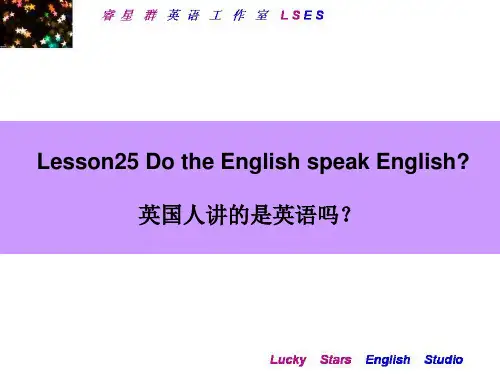
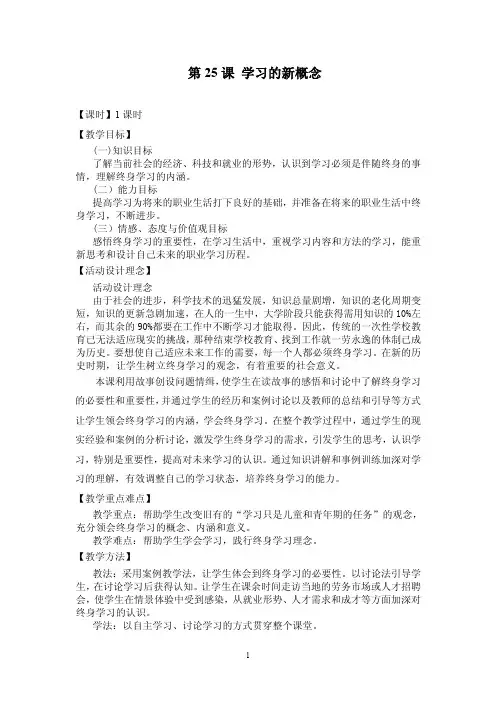
第25课学习的新概念【课时】1课时【教学目标】(一)知识目标了解当前社会的经济、科技和就业的形势,认识到学习必须是伴随终身的事情,理解终身学习的内涵。
(二)能力目标提高学习为将来的职业生活打下良好的基础,并准备在将来的职业生活中终身学习,不断进步。
(三)情感、态度与价值观目标感悟终身学习的重要性,在学习生活中,重视学习内容和方法的学习,能重新思考和设计自己未来的职业学习历程。
【活动设计理念】活动设计理念由于社会的进步,科学技术的迅猛发展,知识总量剧增,知识的老化周期变短,知识的更新急剧加速,在人的一生中,大学阶段只能获得需用知识的10%左右,而其余的90%都要在工作中不断学习才能取得。
因此,传统的一次性学校教育已无法适应现实的挑战,那种结束学校教育、找到工作就一劳永逸的体制已成为历史。
要想使自己适应未来工作的需要,每一个人都必须终身学习。
在新的历史时期,让学生树立终身学习的观念,有着重要的社会意义。
本课利用故事创设问题情缉,使学生在读故事的感悟和讨论中了解终身学习的必要性和重要性,并通过学生的经历和案例讨论以及教师的总结和引导等方式让学生领会终身学习的内涵,学会终身学习。
在整个教学过程中,通过学生的现实经验和案例的分析讨论,激发学生终身学习的需求,引发学生的思考,认识学习,特别是重要性,提高对未来学习的认识。
通过知识讲解和事例训练加深对学习的理解,有效调整自己的学习状态,培养终身学习的能力。
【教学重点难点】教学重点:帮助学生改变旧有的“学习只是儿童和青年期的任务”的观念,充分领会终身学习的概念、内涵和意义。
教学难点:帮助学生学会学习,践行终身学习理念。
【教学方法】教法:采用案例教学法,让学生体会到终身学习的必要性。
以讨论法引导学生,在讨论学习后获得认知。
让学生在课余时间走访当地的劳务市场或人才招聘会,使学生在情景体验中受到感染,从就业形势、人才需求和成才等方面加深对终身学习的认识。
学法:以自主学习、讨论学习的方式贯穿整个课堂。
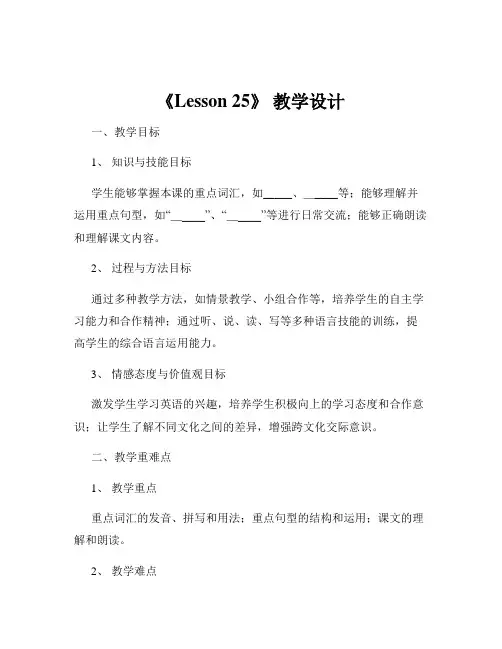
《Lesson 25》教学设计一、教学目标1、知识与技能目标学生能够掌握本课的重点词汇,如_____、_____等;能够理解并运用重点句型,如“_____”、“_____”等进行日常交流;能够正确朗读和理解课文内容。
2、过程与方法目标通过多种教学方法,如情景教学、小组合作等,培养学生的自主学习能力和合作精神;通过听、说、读、写等多种语言技能的训练,提高学生的综合语言运用能力。
3、情感态度与价值观目标激发学生学习英语的兴趣,培养学生积极向上的学习态度和合作意识;让学生了解不同文化之间的差异,增强跨文化交际意识。
二、教学重难点1、教学重点重点词汇的发音、拼写和用法;重点句型的结构和运用;课文的理解和朗读。
2、教学难点如何让学生在实际情境中灵活运用所学词汇和句型进行交流;如何引导学生理解课文中的文化内涵。
三、教学方法情景教学法、任务驱动法、小组合作法四、教学过程1、导入(5 分钟)通过播放一段与本课主题相关的英语视频或展示一些图片,引起学生的兴趣,然后提出一些问题,引导学生思考并进入本课的学习。
2、词汇学习(10 分钟)利用图片、实物或动作等方式,向学生展示并讲解重点词汇,让学生跟读、拼写,然后通过单词游戏,如猜单词、单词接龙等,巩固所学词汇。
3、句型学习(10 分钟)呈现重点句型,讲解句型的结构和用法,让学生模仿例句进行造句练习,然后通过小组对话的形式,让学生在实际交流中运用句型。
4、课文学习(15 分钟)播放课文录音,让学生边听边理解课文大意;然后逐句讲解课文,分析重点语法和句子结构;最后让学生分角色朗读课文,加深对课文的理解。
5、拓展练习(10 分钟)设置一些与课文相关的情景,让学生运用所学词汇和句型进行对话练习,如模拟购物、旅游等场景;然后让学生展示他们的对话,教师进行点评和指导。
6、总结归纳(5 分钟)回顾本节课所学的重点词汇、句型和课文内容,强调重点和难点,让学生对所学知识有一个清晰的认识。
《Lesson 25》教学设计一、教学目标1、知识目标学生能够掌握本课的重点词汇,如_____、_____、_____等。
学生能够理解并运用重点句型,如“_____” 、“_____” 。
2、技能目标能够听懂与本课主题相关的对话和短文,并获取关键信息。
能够运用所学词汇和句型进行简单的交流和表达。
3、情感目标培养学生学习英语的兴趣和积极性。
增强学生的合作意识和团队精神。
二、教学重难点1、教学重点重点词汇的发音和拼写。
重点句型的结构和用法。
2、教学难点如何让学生在实际情境中灵活运用所学知识进行交流。
帮助学生理解一些较为复杂的语法结构。
三、教学方法1、情景教学法通过创设生动的情景,让学生在实际情境中学习和运用语言。
2、任务驱动法布置具体的任务,让学生在完成任务的过程中提高语言运用能力。
3、合作学习法组织学生进行小组合作学习,培养学生的合作精神和交流能力。
四、教学过程1、导入(5 分钟)播放一段与本课主题相关的英语视频或歌曲,引起学生的兴趣。
提问学生关于视频或歌曲的内容,引导学生进入本课的学习。
2、词汇学习(10 分钟)展示本课的重点词汇,通过图片、实物、动作等方式帮助学生理解词汇的含义。
带领学生朗读词汇,纠正发音。
3、句型学习(10 分钟)呈现重点句型,讲解句型的结构和用法。
举例说明句型在不同情境中的运用。
4、听力练习(10 分钟)播放课文录音,让学生边听边理解。
设计一些听力问题,检查学生的听力理解情况。
5、对话练习(10 分钟)安排学生进行小组对话练习,运用所学词汇和句型。
邀请几组学生上台展示对话,给予评价和指导。
6、阅读练习(10 分钟)发放与课文相关的阅读材料,让学生阅读并回答问题。
引导学生总结阅读材料的主要内容。
7、写作练习(10 分钟)布置写作任务,让学生根据给定的主题,运用所学知识写一篇短文。
选取部分学生的作品进行展示和点评。
8、总结归纳(5 分钟)回顾本课所学的重点词汇和句型。
强调在实际生活中运用所学知识的重要性。
Lesson 25I. VocabularyA) Impressive adj. Great and rememberable给人深刻印象的 deeply impress the mind in a feelingThis is the impressive scene. 这是给人深刻印象的一幕(scene n.现场, 场面, 情景)impression n.印象 make a lasting impression to sb. 给人以不可磨灭的印象have a false impression of sb. 对某人有错误的看法gave sb. impression that… 给某人…的印象He gave me impression that it was about to leap out at me. (Lesson 24)impress vt.留下印象What impressed me most is your diligence.他给我留下印象最深的是呢的(n.勤奋)impress sb with… 用…给某人留下深刻的印象you impressed me with your beautiful clothes.B) Vessel n.轮船, 大木船(very formal word, 用于文学体中, 可以代替ship、boat)a fishing vessel / a sailing vessel帆船Ship n.大船;舰艇; Boat n.小船, 艇(比ship小, 在非正式的场合可以替换) a fishing boatC) Era n.时期, 时代((age or epoch)a special period of time in history with marked feature有着鲜明特征的一个历史时代)纪元,指地球或人类社会历史上一段很长的时期,尤其是指以某些特别事务或发展为标志的。
Review lessons一、复习目标1.复习手写体2.了解情态动词的概念3.lesson25-30单词背会写会4.句型:①会灵活使用There be (单复数形式)的问答②会用where提问和回答表示位置的句型和介词短语5.填写练习册lesson25-30课剩余的题二、教学重点教学目标3.4.5三、教学难点教学目标5四、教学过程1、默写手写体中的d,f,h,i,j,k,l,m,每个3遍。
2、告诉大家这节课是复习课,系统地领导学生读单词和课文同时对有难度的单词再复习一遍,因为有新同学,所以应该对单词多做些解释。
3、引导学生自己总结知识点比如lesson 25T:what did we learn from this lesson?我们在这节课学了什么呢?S:balabala...T:我们学了there is sth. in/on the ...for exampleHow to say 桌子上有一本书(指着桌子上的书)S:There is a book on the desk.How to say 桌子里有一个瓶子S:There is a bottle in the desk.T:Is there a book on the desk?S:Yes,there is.T:Is there a book in the desk?S:Yes,there is.T:Is there a cat on the desk?S:No,there isn’t.T:那么问书在哪儿怎么说?S:Where is the book?T:冰箱在哪里?S:Where is the refrigerator?T:Ok,very good.How to say 桌子上有一些书(指着桌子上的书)S:There are some books on the desk.T:How to say 桌子里有一些书S:There are some books in the desk.T:Ok,I have a question.T:Are there some books on the desk?这句话对吗?不然怎样改?S:Are there any books on the desk?T:why?为什么这样改?那桌子上没有一些书怎么讲?S:There aren’t any books in the desk.T:how to say 勺子们都去哪了?S:where are spoons?T:为什么用are?S:勺子们spoons 是复数4、关于情态动词今天要重点讲一下情态动词must 必须,应该,今后我们会接触到其他的情态动词,比如can可以,should应该,may可以,可能,关于情态动词1.情态动词有实际意义,但是不可以作谓语,和后面的单词共共同做谓语2.情态动词没有让人称和数的变化3.含有情态动词的句子变否定句的时候在情态动词后面加上not,must not,绝不能,绝对不可以,缩写为mustn’t。
(Lesson 25 Smith’s kitchen)Teach Plan组员:教学对象:初一年级学生,学生成绩较差,部分学生学生比较沉闷,需要老师多关注和提醒。
学情:他们已学过了how many, where 引导的特殊疑问句以及由be 动词引导的一般疑问句及其肯否回答,这些知识点可以为本节课服务。
同时,他们能够听到课堂指令语和日常交际用语,并能够做出相应的回应和回答。
ⅠTeaching aims:1. 学生能够掌握There be 句型的单数形式句型(肯定句,否定句和一般疑问句)。
2. 学生能够对There be 句型的复数形式句型(肯定句,否定句和一般疑问句)有一定的了解,为下节课做铺垫。
3. 复习冠词a, an, the的用法。
4.学生能够了解介词in, on的用法及介词短语in the kitchen, on the left, on the right, on the table 的含义。
5.学生能够了解以下扩充词语的含义:right, left, cook, room。
ⅡTeaching keys and difficult points:1.学生能够掌握There be 句型的单数形式句型(肯定句,否定句和一般疑问句)。
ⅢTeaching aids:1.PPT 白板白板擦双色笔ⅣTeaching steps:Step1 Greeting& lead-inT: Good morning, class.Ss: Good morning, Betty.T: Ok, now I’ll divide you into two groups. You are G☆,and you are G※.First,let’s hear a song, and then answer my question. Which group’s answer is right, you will get some gift from Father Christmas. Are you ready? Let’s go!(播放音乐Jingle bell rock播放以后,抽学生回答问题。
)T:What’s the song?Ss: Jingle bell.T: Very good. (如果回答正确的组一个♀,作为奖励)T: Do you know? When do people usually sing this song?Ss: On Christmas Day.T: so, what day is Christmas Day?Ss: On December, 24th.T: Good, who can tell me? On Christmas Day, what can you see? One,two, go. (选举手最快的人回答,回答正确的组则可得一个♀)Ss: snow, Christmas tree, snow boy…T: Great, let’s look at a picture.Step2: Presentation& Dills(在PPT上展示以下图片对学生进行提问)T:Listen to me carefully!Clap your hands! (抽拍手最快学生回答,回答正确以♀作为奖励机制,回答错误,及时纠正)T:What can you see?Ss: snow.T: Yes, there is some snow on the ground.T: What else?Ss: trees…T: Yes, there are some Christmas trees on the snow.T:What can you see on the left of the picture?S a: A boy.T: You can see a boy. Great!One ♀for you.(在教师多次输入there be 句型后引导学生口头输出there be 句型) We can say “There is a boy on the left of the ground.”Follow me. There is a boy on the left of the ground.S S: There is a boy on the left of ground.T:What can you see on the left of the boy?One! Two! Hands up!S b: Snowman. (抽举手手最快学生回答,回答正确以♀作为奖励机制,回答错误,及时纠正)T: Clever! We can say “There is a snowman on the left of the boy”. Follow me! There is a snowman on the left of the boy.S b: There is a snowman on the left of the boy.T: Great. One ♀for you.T:What else can you see on the snow?Ss: Some boxes.T: Yes, there are some boxes on the snow. So, you should say “There are some boxes on the snow.”T: Great. One ♀for you.T: All of you read the five sentences please. One, two, go.(播放有以下5个句子的PPT)Sentence 1: There is some snow on the ground.Sentence2: There is a boy on the left of the ground.Sentence 3: There is a snowman on the left of the boy.Sentence4: There are some boxes on the snow.Sentence5: There are some Christmas trees on the snow.T: Good!看这几个句子,大家能发现什么?Ss: 前3个句子都有 there is,后2个句子都有there are.(给回答问题的学生奖励)T: 是的,is 和are都是什么词?Ss:都是be动词T:我们可以用一句话来概括这五个句子,都由there be 构成, T: 那我们一起来看这几句话是什么意思。
谁愿意翻一下这几个句子呢?(老师先引导学生翻译前两个句子,再让学生自主翻译后3个句子,若学生翻译错时,老师给予及时纠正)Ss: …(老师给回答正确的组加分奖励,并将ppt 播放到有汉语翻译的一页。
)T:非常棒,从刚才的几个句子的意思来看,都表示“某地有某物”。
因此there be句型翻译为“某地有某物”。
T:现在一起观察这几个句子(引导学生一起找出句子的主语和谓语及主语后面的句子成分)Sentence 1: There is some snow (主语) on the ground(介词短语).Sentence2: There is a boy(主语) on the left of the ground(介词短语).Sentence 3: There is a snowman (主语)on the left of the boy(介词短语).Sentence4: There are some boxes(主语)on the snow(介词短语). Sentence5: There are some Christmas trees (主语)on the snow(介词短语).T: 从刚才的分析中,我们可以得出there be 句型肯定句的结构是:There be + 主语 + 介词短语。
T:在例句中我们看到了be动词的哪2种形式,Ss:is 和are。
T: 那什么时候用is,什么时候用are呢?(引导学生观察be 动词和主语的变化以发现并总结there be 句型的3种结构。
)T: 第一句中主语是?Ss: a boyT: 谓语呢?Ss:是is,T: a boy是几个人?Ss: 一个。
T:那a boy 是单数还是复数?Ss: 单数。
(用同样的方法分析其他句子。
第二句中主语是 a snowman , 是单数,谓语是is。
第三句中主语是some snow, snow是不可数名词,前面用some来修饰,谓语是is。
第四句的主语是some boxes , 是复数,谓语是are。
第五句的主语是some Christmas trees,是复数,谓语是are。
)T:因此,我们可以得出there be 句型的两种结构:There be +可数名词单数+介词短语;There be + (some)+不可数名词+介词短语;There be + (some)+可数名词复数+介词短语。
都翻译为“某地有某物”。
(将ppt 播放到有there be 句型定义、结构的页)T:大家抄下来。
Ss:抄笔记T: Are you finished?Ss: Yes.T:现在我们用“there be + 主语 + 时间∕地点”这个结构在造个句。
比如:桌子上有一本书。
我们就可以说:T and Ss: There is a book on the desk.(口头翻译即可)T:有一支钢笔在手里呢?Ss:There is a pen in my hand. (口头翻译即可)T: 那再来看着几个例句。
我们要怎样把他们变为一般疑问句呢?T:我们之前学过变一般疑问句的口诀,大家一起来回顾一下。
T: 那这几个句子都有be 动词,所以我们要按照be动词的句子来变换句子。
我们前面说了对有be 动词的陈述句变一般疑问句的口诀(be 提前并大写,其余照抄,句末问,若遇 some 变 any),这儿我们用它来对there be 句型进行句型转换。
(通过引导学生通过复习由be 动词构成谓语动词的句子变一般疑问句的方法,否定句以及肯否回答来引出并呈现there be 句型的引导的一般疑问句,否定句,以及引出there be 句型的一般疑问句的肯否回答Yes, there is. No, there are.)T: 之前我们学习由be动词引导的一般疑问句时,讲到了把陈述句变成一般疑问句,有个口诀就是:有be提be,有情找情,无情五be 就借助,把陈述句变为否定句,直接在be动词的后面加“not”。